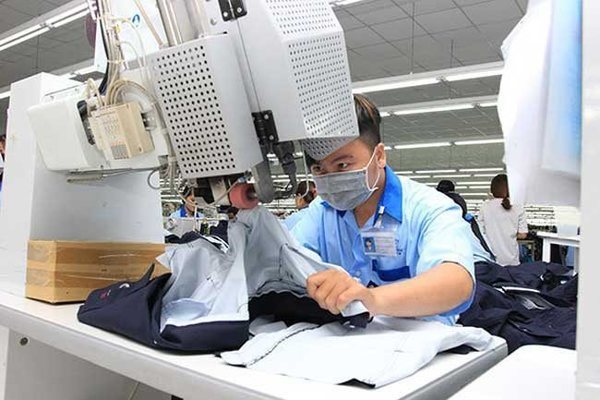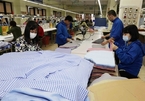 |
| An employee working at a garment factory in Vietnam. Apparel outsourcing fees in Vietnam are reportedly higher than those in other countries in the region, negatively affecting the country’s exports |
Apparel outsourcing fees are reportedly higher than those in other countries in the region, such as South Korea and China, negatively affecting the country’s exports, according to the Ministry of Industry and Trade.
Despite textiles and garments being listed among the top five product groups whose export value exceeded US$10 billion each during the year up to September, multiple major challenges are facing the industry, the ministry noted.
Besides this, the consumption of fiber and materials has also run into difficulty as China, the country’s main buyer, has reduced imports of these goods.
Meanwhile, the number of textile and garment orders fell strongly over the past few months.
“During the year up to June of 2018, many major firms active in the apparel sector had secured export orders enough for local production until the end of the year, but this year, a small number of orders has been received by local firms,” the ministry said.
The decline was attributable to buyers’ concerns over the possible escalation of the trade war between the world’s two largest economies.
KB Securities Vietnam JSC pointed out that the exchange rate between the U.S. dollar and the dong has moved sideways since the start of the year, but during the year up to September, the State Bank of Vietnam’s central rate increased by 1.47%, while the interbank interest rate edged up 0.12% against the end of last year, meaning a slightly weaker dong.
Meanwhile, the exchange rate on the free market dipped by 0.13%. However, in the third quarter of 2019, the value of the Vietnamese dong soared by 3% versus the end of June.
As the increase in the dong value has put Vietnam’s exports at a disadvantage, the central bank has adopted some measures to reduce the pressure of the rise, but the effectiveness of this move fell short of expectations.
In addition, Vietnam is gradually losing its advantage over low-cost labor. Some apparel experts stated that labor costs at textile and garment plants in the country account for 26%-30% of the primary costs, while in Bangladesh, they represent some 20%. The minimum wage for workers is forecast to rise by 5%-8% this year.
In spite of the weak performance of apparel shipments, the nine-month period saw exports of garment and textile products jumping 10.4% year-on-year to reach an estimated US$24.7 billion. SGT
Lan Nhi

Vietnam considers safeguard measures for apparel sector under CPTPP
The Ministry of Industry and Trade (MoIT) is drafting a circular providing guidance for the application of safeguard measures for textile and apparel products under the CPTPP.

Safety initiative in apparel and footwear factories started in VN
The Vietnam Textile and Apparel Association (VITAS) in co-operation with IDH – a Dutch sustainable trade initiative – kick-started the Life and Building Safety Initiative (LABS).
 The recent hike in the Vietnamese dong’s value, due to U.S.-China trade tensions, has driven up the outsourcing fees of goods, mainly in the textile and garment industry. " itemprop="description" />
The recent hike in the Vietnamese dong’s value, due to U.S.-China trade tensions, has driven up the outsourcing fees of goods, mainly in the textile and garment industry. " itemprop="description" />